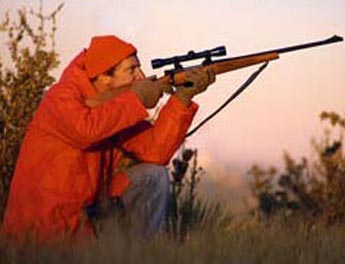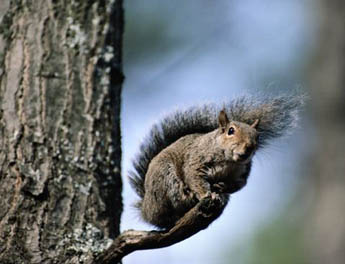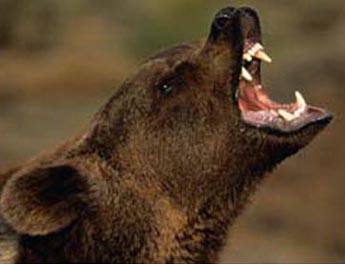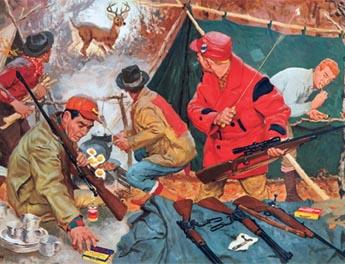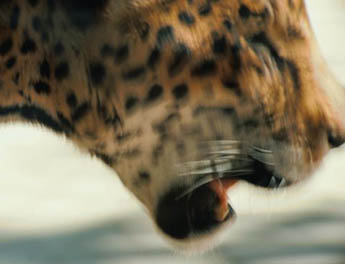There’s been so much talk of wildcat cartridges here of late that you could get the idea you’re behind the trajectory curve if you don’t go to the mountain armed with a .277 STSS (Saber-Toothed Swizzle Stick) or some similar exotica of ozone-rending velocity. We all like having rifles and cartridges that are a bit different from the guy’s down the street. And there’s no question that wildcats are different from store-bought calibers. But being different doesn’t always mean being better. This brings up the question of which wildcats are worth bothering with.
No Cats at K-Mart
To make sure we all understand what we’re talking about, a wildcat is a cartridge you can’t buy at K-Mart or your local gun shop. Often, in fact, a wildcat is a one-of-a-kind affair-matched to a single custom-built rifle or pistol-because the owner wanted something he figured would shoot faster, flatter and more accurately than anyone else’s. But these are the exceptions. Many wildcats are justly popular and have an enthusiastic following, as we’ll see later.
Generally speaking, wildcats fall into two groups (purists may even claim that vanity or proprietary cartridges such as the Dakota and Lazzeroni brands are also wildcats, since they are single-source custom loads outside the mainstream shooting industry). The first group includes the so-called “Improved” cartridges. The distinguishing feature of this class of wildcats is that a rifle chambered for an Improved cartridge will also safely fire ordinary factory ammo. For example, if you have a rifle that has been chambered for, say, the .257 Roberts Improved, it will also fire standard .257 Roberts ammo. Of course, the headspacing of an Improved chamber must be correct or you can have a dangerous situation with factory loads, which is why you want to be sure the gunsmith who does your chambering knows what he’s doing. The idea behind an Improved cartridge is to enlarge the case so that powder capacity is increased and it can then be handloaded for velocities higher than factory fare.
**Classic Cats
**Another breed of cat entirely is what I call the “pure” wildcat. Most of these can’t be safely fired in a factory chamber, and though there are exceptions that will be noted later, the essence of most of these hot cats is driving a bullet faster than possible with factory or even Improved calibers. To this end, generations of wildcatters have labored mightily at their workbenches and in their imaginations. Some overenthusiastic experimenters tend to equate velocity with virility, and more than a few rifles have come unglued at their less-than-gentle urgings. This is why a popular maxim in the shooting game has it that you can always recognize wildcatters because they tend to be missing a few fingers and other miscellaneous parts. But to be fair, wildcatters have developed cartridges that evolved into some of our best and most popular factory rounds. These include such standbys as the .22 Hornet, .22/250 Rem., .243 Win., 6mm Rem., .25/06, .260 and 7mm/08 Rems., .35 Whelen, etc. In fact, it can be fairly claimed that all cartridges were born of wildcat lineage.
The basis of virtually every wildcat is simply converting an existing cartridge case to another shape and caliber. For example, consider the saga of the most famous wildcatter of all. Back in the 1940s he was struck with the notion of necking a .300 Holland & Holland Magnum case down to .270 caliber. By also blowing out the shoulders of the belted H&H; case, he figured powder capacity would be about 25 percent greater than with the standard .270 Win., and velocity substantially higher. As it turned out, his wildcat .270 drove 130- and 150-grain bullets about 300 fps faster than the same weight slugs in a standard .270. His name was Roy Weatherby and his .270 Magnum wildcat was the first of a family of Weatherby Magnums that were to become a ballistic dynasty.
Tooot to Trot
Some wildcats, though, are too hot to touch, as was my thinking a few years back when a big-name gunmaker contacted me about making a run of varmint rifles chambered for the .22 CHeetah (Carmichel/Huntington). I was flattered but told them that launching 50-grain .22-caliber bullets at upward of 4,300 fps was getting on the ragged edge of handloading and that they’d probably save themselves some problems by leaving the CHeetah family (which now includes 6mm and 6.5mm versions as well as the original .22) to custom gunsmiths.
Between you and me and the gate-post, another reason I wasn’t keen on going legit with the .22 CHeetah was because I figured its reputation for needle-threading accuracy would suffer in a factory version. Though I designed in a few accuracy-enhancing features, the main reason the .22 CHeetah is known for accuracy as well as velocity is because I have exhorted gunsmiths to build CHeetahs only on stiff, accurate actions such as the Remington 40-X or other high-quality benchrest-grade actions, and to use top-quality barrels, stocks and scopes. In other words, accurate rifles beget accurate cartridges. So when a wildcatter tells you that he has developed a wonderfully accurate cartridge, what he’s mainly saying is that he put together a good action and barrel, and built a fine rifle.
A case (no pun) in point is the renowned 6mm PPC, a wildcat developed by a couple of my shooting amigos, Lou Palmisano and Ferris Pindell. The 6PPC wins at least 9 out of every 10 benchrest championships and thus can be justly promoted as the most accurate cartridge on earth. Yet during the brief period that it was offered in a more or less standard-grade factory rifle, it proved no more accurate than that rifle’s other chamberings. So if you want an accurate wildcat, build an accurate rifle first.
The Golden Age of wildcatting was probably back in the 1950s. Surplus military rifles such as the German M-98 Mauser were easy to find then and made a cheap-but-workable platform for a wildcat rifle. War salvage .30/06 brass was plentiful and cheap as dirt, so it was logical that the hardy ’06 case was necked down and up, shortened and expanded into scores of wildcat forms and calibers.
For those of us with only a few nickels jingling in our jeans, the venerable ’06 case could also be squeezed or trimmed into other standard calibers, such as .270 Win. and 8×57 Mauser, so handloaders of those robust times were well versed in making salvage .30/06 cases into silk purses. During this era, Bruce Hodgdon endeared himself to wildcatters with GI-surplus powder that could be had for as little as four bits a pound if you bought a drum. It was good stuff and we burned it by the bucket.
Boomer Cats
When the ’06 case had been squeezed and expanded into just about every possible shape that could be made to fit into a rifle, wildcatters followed Weatherby’s lead and turned with gusto to the bigger belted-magnum cases. The greater propellant capacity of these cases yielded some awesome velocities, but the extra case length also meant that they wouldn’t work in standard-length rifle actions. Thus many experimenters simply shortened the magnum case to .30/06 length or thereabouts and a whole new genre of “Short Magnums” resulted. These experiments led to such popular commercial rounds as the 7mm Rem. Mag. and Winchester’s .300 and .338 Mags.
The one great limitation to the ingenuity of wildcatters has been the limited availability of workable cartridge cases. In recent times, though, the influx of plumper but once-hard-to-find brass, such as the .404 Gibbs and .416 Rigby, has wildcatters downright giddy. Not only do these pudgy cases offer a higher ratio of propellant capacity to length, but they are also free of the often troublesome belt of the traditional H&H; Mag. case. (Contrary to widespread misinformation, the belt does not increase strength; it is only for headspacing.)
Remington’s new .300 Ultra Mag. will be a boon for wildcatters because it is nice and plump for maximum propellant capacity but without the aggravating belt of the old H&H; case. I predict it will be necked up and down to a wide range of calibers, especially in shortened versions. I’m already at work on a 6.5/.300 Ultra Mag.
A Cat of Your Own
About now you’re probably wondering if there’s a wildcat in your future and what the best choices might be. As mentioned earlier, virtually all bottleneck cartridges can be Improved, with the .280 Rem. being one of the best. Many gunsmiths can do this simple rechambering job and loading dies are easily available.
Kenny Jarrett, the well-known custom-rifle maker (Jarrett Rifles, Inc., 383 Brown Road, Jackson, SC 29831; 803-471-3616), has built upwards of 700 rifles chambered in .280 Rem. Improved and recommends the round because of its accuracy and efficiency. I’ve seen five-shot 100-yard groups fired with a Jarrett-built .280 Ackley Improved that could be covered with a dime. Velocity is around 3,150 fps with a 140-grain bullet, which is well above standard .280 velocity and almost equals 7mm Rem. Mag. performance.
For varmint hunters who want to walk on the wild side, the .22 CHeetah will reach out and touch a woodchuck at the far end of a long meadow. Several gunsmiths chamber for the CHeetah and loading dies are available from RCBS & Redding, but I recommend the round only to experienced handloaders who know the ins and outs of neck turning and other advanced loading techniques.
Bolt-action rifles are best for wildcatting, and a rebarreling job to a wildcat caliber can turn a ho-hum old clunker into a sizzling performer that will hold your hunting pals in awe.ease strength; it is only for headspacing.)
Remington’s new .300 Ultra Mag. will be a boon for wildcatters because it is nice and plump for maximum propellant capacity but without the aggravating belt of the old H&H; case. I predict it will be necked up and down to a wide range of calibers, especially in shortened versions. I’m already at work on a 6.5/.300 Ultra Mag.
A Cat of Your Own
About now you’re probably wondering if there’s a wildcat in your future and what the best choices might be. As mentioned earlier, virtually all bottleneck cartridges can be Improved, with the .280 Rem. being one of the best. Many gunsmiths can do this simple rechambering job and loading dies are easily available.
Kenny Jarrett, the well-known custom-rifle maker (Jarrett Rifles, Inc., 383 Brown Road, Jackson, SC 29831; 803-471-3616), has built upwards of 700 rifles chambered in .280 Rem. Improved and recommends the round because of its accuracy and efficiency. I’ve seen five-shot 100-yard groups fired with a Jarrett-built .280 Ackley Improved that could be covered with a dime. Velocity is around 3,150 fps with a 140-grain bullet, which is well above standard .280 velocity and almost equals 7mm Rem. Mag. performance.
For varmint hunters who want to walk on the wild side, the .22 CHeetah will reach out and touch a woodchuck at the far end of a long meadow. Several gunsmiths chamber for the CHeetah and loading dies are available from RCBS & Redding, but I recommend the round only to experienced handloaders who know the ins and outs of neck turning and other advanced loading techniques.
Bolt-action rifles are best for wildcatting, and a rebarreling job to a wildcat caliber can turn a ho-hum old clunker into a sizzling performer that will hold your hunting pals in awe.
